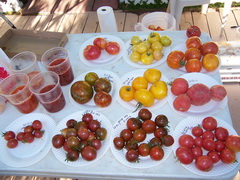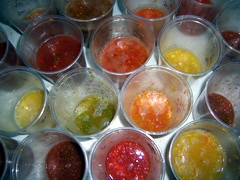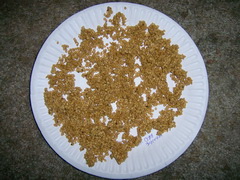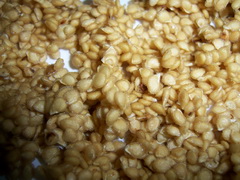
Seeds and juice are squeezed into plastic cups.

The beautiful colors of different varieties.

Batch of new tomato seeds laid out flat for drying.

Its amazing that one little seed can make a huge plant.
I personally select all my tomatoes for seeding. When developing these amazing tomato varieties I select from the chosen few that exhibit extreme flavor, great looks and plant habit. This is a all natural time consuming process.
Seeds and juice are squeezed into plastic cups, covered with a paper towel to prevent it from becoming a fruit fly paradise but still allowing air in so the fermentation process starts.
Fermentation: 3-4 days at room temperature. This process removes the gel coating from the fresh seed. This gel is a natural growth inhibitor; nature’s way of keeping the seed from sprouting in the tomato.
After the fermentation process is complete. This will help kill off unwanted diseases and produce a clean seed for next year’s planting.
The freshly fermented seeds are rinsed clean and put on a paper plate to dry for a couple weeks.
The clean dry seed will last up to 10 years although I am constantly freshening up my stock.


